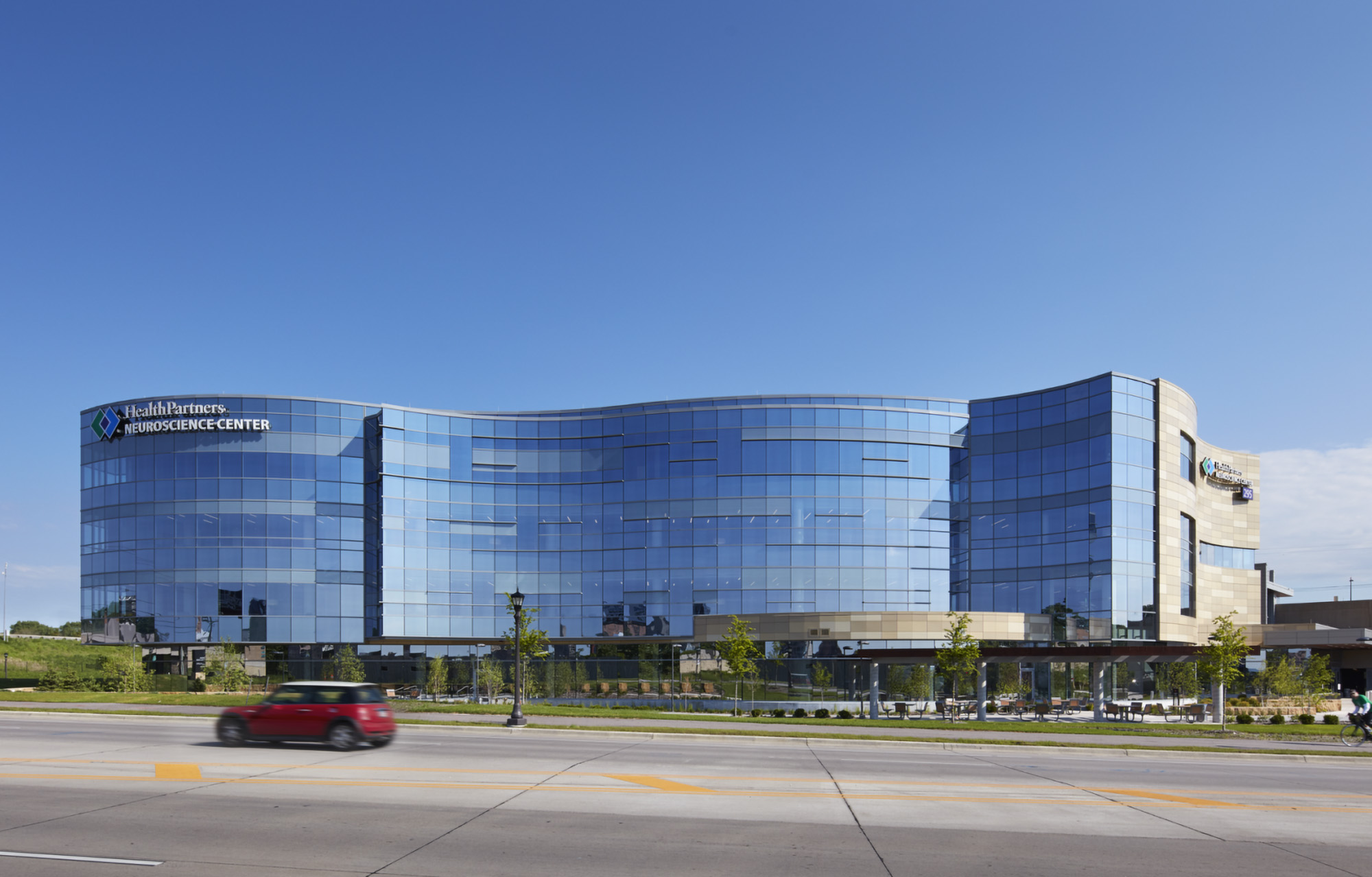Exploring the cutting edge of neuroscience facility design

Neuroscience facilities serve patients with a wide range of conditions, from cognitive issues like Alzheimer’s to mobility challenges resulting from spinal cord injuries. Patients facing cognitive disorders may feel as though they’re experiencing a space for the very first time, even though they’ve been there dozens of times, while patients with mobility aids require extra space to access and move through a facility. These spaces need to be intuitively accessible and comfortable every time.
From facilitating wayfinding to incorporating new technologies, thoughtful design helps to create calming, restorative experiences while supporting healthcare advancement for this patient population. In the latest episode of Side of Design, we dive into the unique considerations and challenges of designing neuroscience facilities, joined by BWBR Principal Ryan Johansen, Design Leader Chris Fischer, and Senior Interior Designer Miranda McNamara Mace.
An Intuitive Environment
Whether or not patients face memory-related issues, designing spaces that are easy identifiable is a critical component of neuroscience facility design. “It’s not just signage, it’s more of those perceptive, intuitive wayfinding elements that really help someone navigate the space a little bit more easily,” explains Miranda. For these facilities, wayfinding begins at the exterior. “One of the big things for most of our clients is creating a landmark,” Chris says. “It’s about creating a place that’s easily recognizable so that it feels familiar when you return.”
In one project example, the BWBR team utilized an exterior tower over the neuroscience entry, extending above the building to distinctively stand out on the hospital campus. Not only did this act as a landmark, but also as a form of large-scale wayfinding. “It brought you into the facility from a distance and then, once you got there, it drew you right down to the front door,” Chris explains.
The design team also employs a layered approach to interior wayfinding, incorporating brain-friendly elements like color, texture, and graphics. “As we layer those wayfinding elements with an image, with a different color, with a number or a letter with that texture, it’s just giving those patients options to choose what they remember and can help lead them through the facility each time they come,” Ryan says.
For some patients, the transition between a smooth tile floor and soft carpet triggers spatial awareness. Others might trail their hands along a wall as they progress through a space and be alert for a transition in wallpaper texture. These design elements might be taken for granted in other facilities but are of monumental importance when facilitating accessibility in a neuroscience facility. As Miranda explains, “it gives the patient more of an easy way to be independent when coming out of the clinic and finding their way back to waiting spaces.”
Harnessing New Technology
Advanced technology is increasingly significant in neuroscience facilities, from virtual reality for treatment planning to adaptive technologies that support independent living. With new cutting-edge treatments evolving all the time, designers are seeing a theme of putting technology on display in common areas, allowing patients and their families to understand what the facility is capable of and how it will translate into care.
Designers can help integrate technology into a facility, whether they’re using signage and 3D models to express capabilities in public spaces or incorporating technology inside treatment rooms. Chris shares an example: “Virtual reality is an ideal scenario. It’s not like you can open up the skull and look in there and say, Hey, this is what we’re going to do today, folks.” It’s one thing to show renderings on a computer, but BWBR teams can produce 3D models that bring a design to life and enrich stakeholder understanding throughout the process.
The Power of Collaboration
Speaking of stakeholders, designing successful neuroscience facilities requires close collaboration with a range of stakeholders, from department leaders and frontline staff to patients themselves.
BWBR’s philosophy centers on a collaborative, engaging design process that breaks down complexity and addresses the collective needs of all stakeholders. Chris explains that touring other facilities with the client is a critical part of the process, allowing them to pinpoint what design elements they like and dislike, and what will and won’t work for their staff. “Precedent is key,” he says.
All stakeholders matter, but BWBR makes a point of constantly keeping patient experiences in mind. “Nothing can replace patient engagement,” Ryan says. “They’re the ones who have the ultimate decision—is this a place I can come to seek my care, or am I going to go somewhere else? Do I feel comfortable? Do I feel valued?” Ryan says neuroscience facilities represent “probably the most complex and challenging project type I’ve experienced and been fortunate to work on.” Despite the complexity, the team is experienced in breaking down these complex projects into a streamlined process that drives results.
The Future of Neuroscience Facility Design
As the conversation turns to the future, the design team highlights emerging trends and technological advancements that will shape neuroscience facilities in the coming years. The field is on the precipice of significant advancement, from gene therapies and editing to the increasing integration of humans and machines.
And yet, no matter how technologically advanced things get, there are fundamentals that won’t change. As Miranda says, “familiar is a really key word” when it comes to neuroscience design. It’s not an accident that those fundamentals center on grounded, healing elements like access to daylight and the importance of biophilic design, incorporating natural materials to facilitate indoor/outdoor connections.
Design for neuroscience facilities is an intricate balance of art and science, precision and compassion—not unlike the healing process.
The post "Exploring the cutting edge of neuroscience facility design" appeared first on Building Design & Construction

